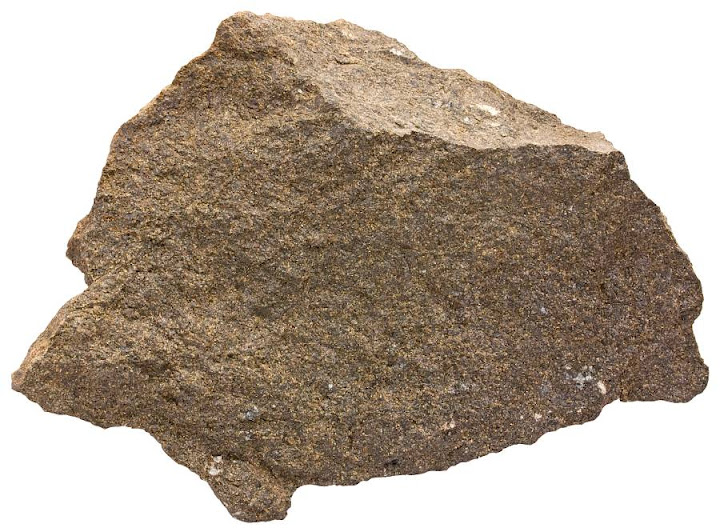Harzburgite is an igneous plutonic rock. It is composed of orthopyroxene and olivine, it is one of ultramafic rocks and belongs into the peridotite group. These are rocks that are abundant in the mantle but scarce on the surface.

Harzburgite has a strict definition which is best explained graphically. Ol, Opx, and Cpx represent olivine, orthopyroxene, and clinopyroxene respectively on this ternary plot. So, harzburgite may contain only small amounts of clinopyroxene and at least 40% (but no more than 90) of it is olivine1.
Fresh rock is dark green, but its components pyroxene and especially olivine are easily hydrothermally altered or weathered. Therefore, harzburgite visible on the surface often has yellowish or reddish brown color.
Harzburgite is formed in the mantle when part of the peridotitic rock melts. This melt has basaltic composition and moves upward (melt is less dense than solid rock).
Clinopyroxene starts melting before, so as the rock partially melts, the composition of the peridotite becomes more and more depleted in clinopyroxene and relatively enriched in orthopyroxene (lherzolite becomes harzburgite).

Dull green is olivine, orthopyroxene is dark brown. Tappeluft, Norway. Width of sample 10 cm.
A sample from the Troodos Mountains in Cyprus (ophiolite complex).
Harzburgite from the Troodos Mountains. Note how orthopyroxene crystals stand out by reflecting light much better than the rest, which is mostly composed of olivine.
References
1. Le Maitre, R. W. (2005). Igneous Rocks: A Classification and Glossary of Terms: Recommendations of the International Union of Geological Sciences Subcommission on the Systematics of Igneous Rocks, 2nd Edition. Cambridge University Press.
Leave a Reply